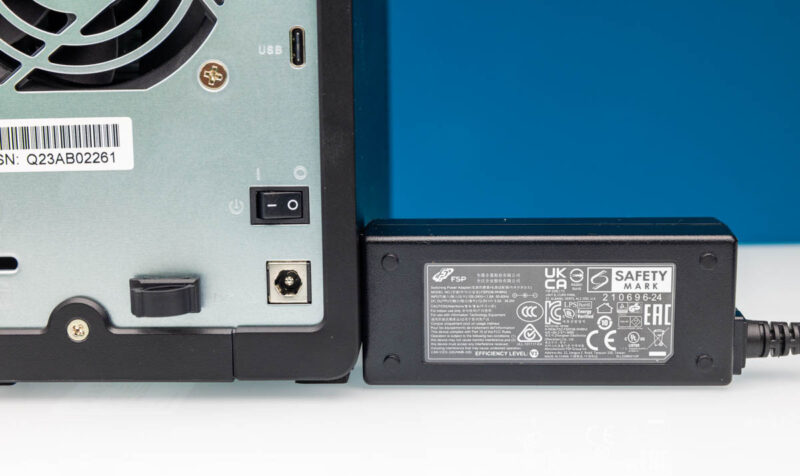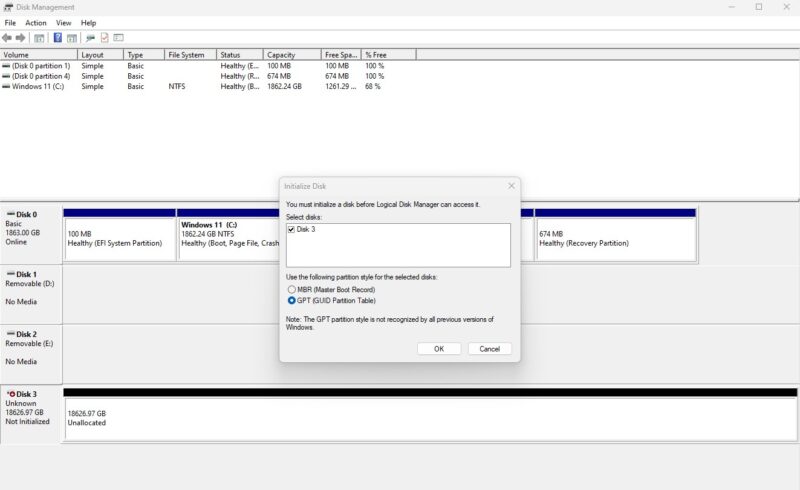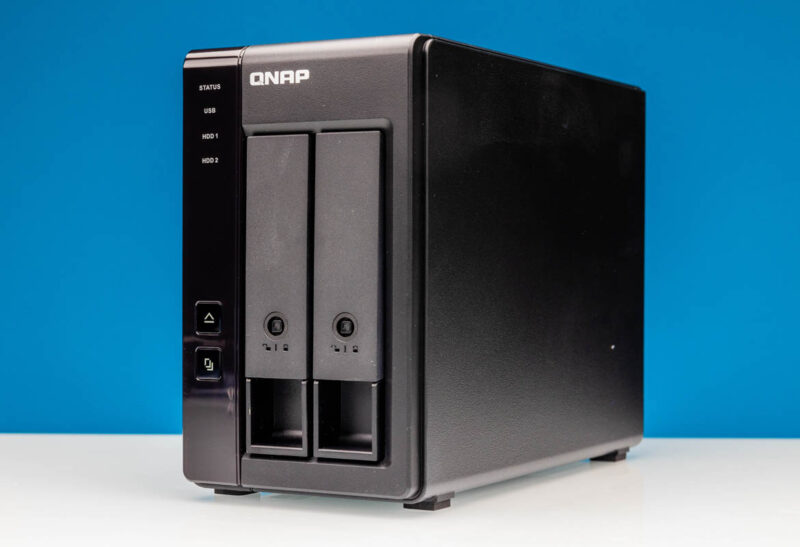QNAP TR-002 Power Consumption
The USB RAID enclosure comes with a 36W power brick, which also lets us know it is a relatively low-power device.

Power without drives at idle is around 1.4-1.7W. With two 20TB drives, we often saw 15-18W when the disks were spinning but without access and slightly higher when there was disk access.
A Few Important Notes
There are a few things that are worth mentioning. First was our experience when we first got this unit up and running. We heard a continuous beep from the QNAP TR-002. This is not a documented beep that we could find information on. It persisted after well over ten restarts of the unit over a week, to the point that we thought the unit was DOA. About a week later, we picked up the unit again before returning it, and we booted it without drives, and the beep did not happen. We were able to set up the unit. It then spent two weeks working perfectly. It might have been a one-off setup thing, but it is something that QNAP should document.

Second is the boot time. The boot time seems to depend a bit on drives and configuration, but this is not like an external USB SSD. It does not show up on your desktop in 1-5 seconds. Instead, it seems to take 40 seconds or more to boot before the fully booted beep occurs, and then it appears either on Windows, a Mac, or a QNAP NAS.
Final Words
For folks who need more storage from a QNAP NAS, a backup appliance for that NAS, or those who simply do not want a NAS and want RAID 1 external storage, this seems to work reasonably well. USB Type-A/ Type-C are not the most secure connectors, but for a lot of folks, they are at least easy. This is the type of enclosure we can see many folks who want to do backups of files and then store them offline. A $159 enclosure, two 20TB drives, flip the switches to RAID 1, plug into a USB, and you are ready to go. This has been a popular storage class for years, and it is fairly easy to see why.

On the other hand, you are paying more for QNAP’s brand. This is a relatively well-thought-out enclosure, but some devices cost much less even if they lack things like tool-less drive trays with vibration dampening.
Where to Buy
We purchased ours on Amazon.
- QNAP TR-002 (Amazon Affiliate)
- Seagate Exos 20TB (Amazon Affiliate)
- WD Gold 20TB (Amazon Affiliate)
Note: We participate in various affiliate programs and may earn a small commission if you use these links.



When testing RAID the main tests I would like to see are what happens when a drive suddenly goes missing; what is performance like during a resilver and how long does a resilver take while the array is under moderate use.
Can it be connected to a UPS for graceful shutdown on loss of mains power?
It would also be good to know whether the data from one of the disks can be recovered by plugging the drive directly into a PC for when the RAID enclosure itself fails.
“It would also be good to know whether the data from one of the disks can be recovered by plugging the drive directly into a PC for when the RAID enclosure itself fails.”
I can tell you that, no it does not. I’ve recently had a failure with one of these and it was a mess trying to recover the data, so I gave up. Now I run it with standalone disks and just do backup on the important things.
This thing was released nearly 5 years ago just FYI
“It would also be good to know whether the data from one of the disks can be recovered by plugging the drive directly into a PC for when the RAID enclosure itself fails.”
Came here to ask this. After bad experience, I am very wary of hardware RAID adapters.
What is the workflow of diagnosing a drive failure, replacing and re-silvering? Is there any user interface, or is this strictly a black box, with a proprietory disk format?
What if the box electronics fails?
I would have expected the article to discuss these reliability issues as well as the benchmark results.
Notice that the read and write speed are about the same as a single disk or raid 1. If im not mistaken, raid 1 should offer twice the read speed.